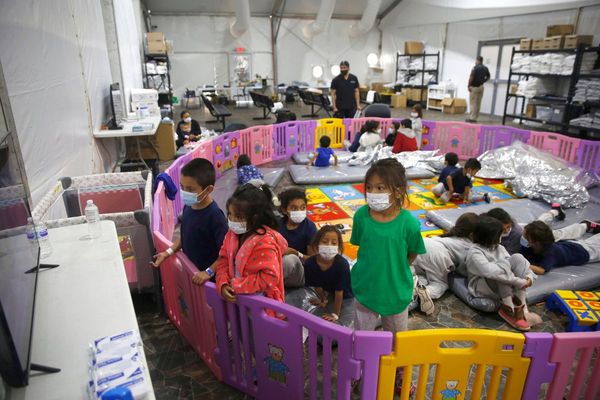Think your child is just watching cartoons or playing a harmless game online? Think again. From apps to schools to toys, there are hidden systems constantly gathering information, often without parents realizing just how much is at stake. Understanding how your child’s data is collected is the first step toward protecting their digital footprint and safeguarding their privacy. Let’s uncover the seven most common and often overlooked ways your child’s data is harvested so you can take back control.
1. Educational Apps Aren’t Always Just for Learning
Many educational apps collect more than just quiz scores or reading progress. They often gather device information, geolocation, browsing habits, and even voice recordings. Some apps also require unnecessary permissions, like access to the microphone or camera, which opens the door for deeper data harvesting. While these platforms may claim the data is used to “improve user experience,” much of it is sold or shared with third-party advertisers. Always read the fine print before clicking “I agree”—especially when your child’s data is involved.
2. Smart Toys Are Smarter Than You Think
Your child’s data can be collected right in your living room through smart toys with built-in microphones, cameras, or Wi-Fi connectivity. These toys may record conversations, track usage, and upload that information to cloud servers. Some have even been found to store data insecurely or transmit it without encryption. While these toys can offer interactive learning, they also raise serious concerns about privacy and surveillance. Parents should research brands thoroughly and consider disabling features that require internet connectivity.
3. Streaming Services and Video Platforms Track Viewing Behavior
Streaming platforms geared toward kids, like YouTube Kids or Netflix, are often optimized to track what your child watches, how long they watch it, and what they click on next. This data is used to build personalized content feeds, but it’s also valuable to marketers looking to target young viewers. Even seemingly innocent autoplay suggestions can be based on a profile built using your child’s data. Limiting screen time won’t stop the tracking, but adjusting privacy settings and using ad-free versions might help reduce data collection. Teaching kids to navigate digital spaces mindfully is a powerful tool in your corner.
4. Public Wi-Fi and School Networks Can Log Their Activity
Many kids access public or school Wi-Fi without knowing the risks. These networks often log visited websites, login times, and device information, and in some cases, even keystrokes. While schools claim to monitor activity for safety reasons, this data can be stored for extended periods and shared with educational tech partners. Public Wi-Fi is even riskier because there’s no way to know what kind of tracking software is in use. Encourage your child to use cellular data or a VPN when privacy matters, especially on unsecured networks.
5. Games and Apps with In-App Purchases Often Spy More Than You Expect
Free games are rarely free when it comes to your child’s data. Many use aggressive tracking software to collect data on how users interact with ads, how long they play, and what items they click. Even before an in-app purchase is made, the game may already be building a behavioral profile. These profiles are often used to manipulate engagement and spending. Make it a rule to only download apps after reviewing their privacy policy together and turning off unnecessary permissions.
6. Schools and Educational Software Providers Collect Data in Bulk
Many schools use digital learning platforms that collect attendance, grades, test results, and behavioral records. This data can follow students for years and is sometimes sold or shared with third-party vendors. Some school platforms even collect biometric data like fingerprints or facial scans for identification or cafeteria purchases. Federal laws like COPPA and FERPA exist, but enforcement is spotty, and many parents are unaware of what’s being stored. Ask your child’s school for a list of tech providers and what data they collect.
7. Social Media and Messaging Apps Encourage Oversharing
Even if your child doesn’t have their own account, they might be featured in posts, group chats, or family videos shared online. These platforms track engagement and use image recognition software to log faces and surroundings. Data collected here can include photos, names, birthdays, and locations—all tied to your child’s digital identity. Over time, this information can be pieced together to create a detailed profile. Teach your kids not just what to share, but why privacy matters from a young age.
Keep Watch, Stay Informed, and Advocate Loudly
Your child’s data is valuable, and many companies are eager to collect, analyze, and profit from it. While some data collection is inevitable in today’s digital world, awareness is a powerful defense. Equip yourself with knowledge, take control of privacy settings, and speak up when schools or companies fail to protect young users. The more proactive you are, the better your chances of keeping your child’s digital footprint safe and minimal. After all, protecting your child’s data is just another form of protecting their future.
Have you discovered surprising ways your child’s data is being collected? Share your experiences and tips in the comments below!
Read More:
School Spies: 8 Privacy Risks of School Apps Collecting Data
Privacy Violation: 7 Things Never to Post About Your Kids Online
The post Data Harvested: 7 Ways Your Child’s Data Is Collected appeared first on Kids Ain't Cheap.








